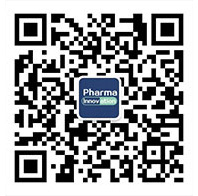The prevalence of chronic kidney disease (CKD), as well as its major risk factors, has steadily increased in recent years, yet measures to identify, treat, and avoid medications that can exacerbate the disease remain low, new research indicates.
These latest findings reveal "a burgeoning number of patients with CKD and its major risk factors. Rates of identification and use of kidney protective agents were low, while potential nephrotoxin use was widespread, underscoring the pressing need for practice-based improvements in CKD prevention, recognition, and treatment" conclude the authors of the study published December 20 in JAMA Network Open.
"These real-world data lay the groundwork for the development of more effective strategies to deliver care that enhances wellness and survival for patients with, and at risk for, CKD," they add.
For the cohort study, first author Katherine R. Tuttle, MD, and colleagues analyzed data from the Center for Kidney Disease Research, Education, and Hope (CURE-CKD) registry of electronic health records, sponsored by Providence St Joseph Health and the University of California, Los Angeles.
The CURE-CKD registry is considered to be among the world's most comprehensive CKD registries, featuring extensive patient-level data on laboratory measures, prescriptions, and vital signs, combined with administrative codes, they note.
Albuminuria and Proteinuria Testing for CKD Rarely Reported
The registry sample of 2,625,963 patients included adults and children with CKD, although it excluded those with end-stage kidney disease and adults considered at risk of CKD because of conditions including prediabetes, diabetes, or hypertension.
Among those in the registry sample, 606,064 (23.1%) of the adult patients met the registry's criteria for CKD, assessed by a combination of estimated glomerular filtration rate (eGFR), albuminuria, and proteinuria measures, and administrative code criteria.
Overall, the prevalence of CKD represented 4.8% of the total of 12.6 million patients who received care at the two centers between 2006 and 2017.
A breakdown of time periods showed the prevalence of CKD increased over time, from just 1.6% of people from 2006 to 2009; to 5.7% from 2010 to 2013; and up to 8.4% from 2014 to 2017 (P < .001).
Those with CKD were a median age of 70 (range 59-81) years; 55.9% were female and 71.7% were non-Latino white individuals.
The authors note, however, that after adjusting for age, sex, and race/ethnicity, the CKD prevalence was 22.6% when assessed according to persistently low eGFR alone.
Of the 12,591 children with CKD in the group (0.4%), the median age was 6 (1-13) years; 56.2% were girls and 52.8% were non-Latino white children.
In terms of eGFR, 22.7% of patients had category 1-2 CKD, more than half had category 3 CKD — including 37.4% with category 3a and 16.5% with category 3b — 6.5% had category 4, 3.4% had category 5, and 13.5% were uncategorized.
Among the adults with CKD, albuminuria assessments were available for just 52,551 (8.7%) patients, and proteinuria measures were available for fewer — only 25,035 (4.1%) patients.
"Albuminuria and proteinuria testing for CKD assessment were rarely reported," the authors note.
Renoprotective Drugs Not Prescribed Enough
Meanwhile, renin-angiotensin system (RAS) inhibitor drugs, which are renoprotective, were only prescribed to about one fifth (20.6%) of adult patients with CKD.
And potentially harmful nephrotoxins, such as nonsteroidal anti-inflammatory agents (NSAIDs) or proton pump inhibitors (PPIs), were prescribed to a third, or 33.7%, of the patients with CKD.
Although a greater increase was observed in uptake of RAS inhibitors among adults with CKD categories 3a to 5 over time, NSAID and PPI prescribing also rose.
For the 75.1% of patients in the cohort who did not have CKD but were considered at risk, 26% had diabetes, considered the leading cause of CKD, or prediabetes, and 48.4% had hypertension, the second most frequent cause of CKD.
About a quarter (25.6%) had hypertension in addition to diabetes or prediabetes.
"The present findings from CURE-CKD point to the critical need for quality improvement and research at the point of care," Tuttle, of Providence St Joseph Health, Providence Medical Research Center, Spokane, Washington, and coauthors, stress.
"Although nearly two thirds of the adults with CKD had diabetes, hypertension, or prediabetes, rates of laboratory testing for albuminuria or proteinuria and of prescribing ACE inhibitors or ARBs were low," they stress.
Meanwhile, "Potentially nephrotoxic agents (ie, NSAIDs and PPIs) were used more commonly than RAS inhibitors," they note.
And "Given the most common cause of death in CKD is cardiovascular disease, the low use of preventive agents, such as statins and aspirin, is also concerning," they conclude.

